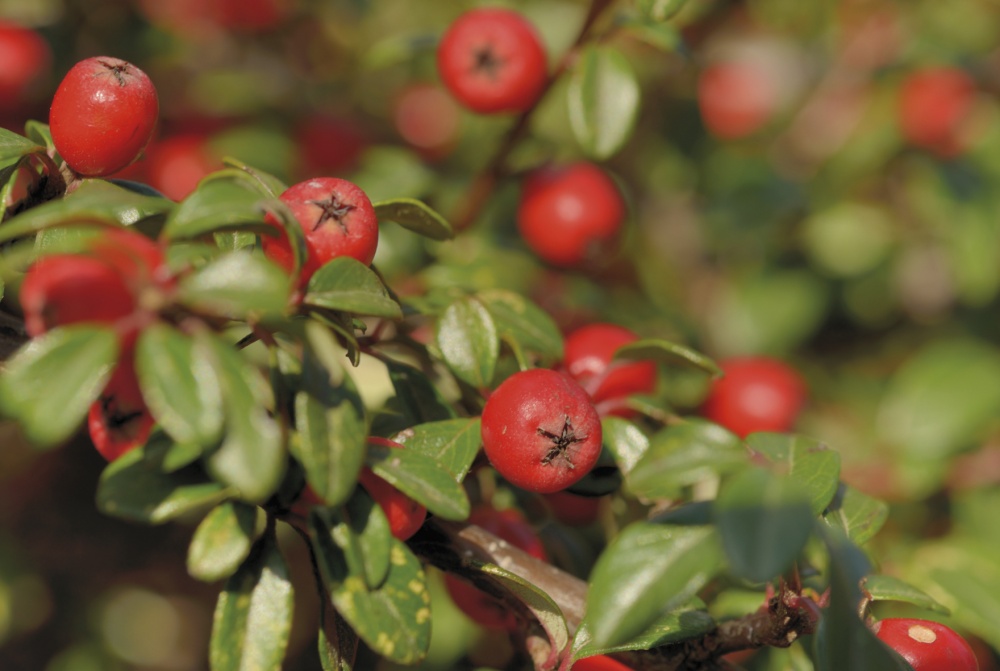The Garden's Changing Seasons

Vanessa Cook of Stillingfleet Lodge Gardens and Nurseries embraces the changes that autumn brings
The plants that flower in September and October are stunning. Let’s start with Asters, or Michaelmas Daisies. Michaelmas Day is September 29th (St Michael’s Day when the harvest is in); the goose is eaten and the garden is full of Asters. My mother’s garden was full of Aster novi-belgii varieties and for many years I was put off growing them. I remember clumps tightly staked and covered with mildew, so the varieties I will suggest are all forms that do not normally get covered with the beastly white mould.
Many of the species’ forms have masses of small flowers. I particularly like Aster ericoides Cinderella, which has horizontal branches rather like a Christmas tree, covered with tiny white flowers making a cloud of white in the border. The white flowers fade to pink so look good for several weeks. At only 90cm it does not need staking and every garden could find room for this variety. Another good form is Aster lateriflorus Lady in Black. Again this has small white flowers, but these have a pink centre and the foliage is dark brown. At 110cm this is taller and more upright, or if you have a tiny garden there is a very similar variety called The Prince, which only grows to 60cm and has the same foliage and flowers. The foliage of both is dark brown throughout the summer and is useful as a foliage accent with the bonus of very pretty flowers later in the year. Aster Little Carlow has larger flowers of soft lavender blue, and flowers for several weeks. Although it is a taller variety it has strong stems and I have never found it to flop.
The Aster novae-angliae group are much taller – at over 100cm tall, they require stakes if you have a windy garden. They are beautiful and have large soft flowers in pretty shades of pinks, blues and purple. I especially like Aster novae-angliae Andenken an Alma Potschke, which has almost fluffy, rosy-pink flowers, and Aster novae-angliae Septemberrubin, which has ruby red flowers that look excellent with autumn foliage. One more Aster I ought to mention is Aster x herveyi, which not only has large heart-shaped leaves and soft violet flowers but will survive in shade and is therefore very useful. I need to add that bees and butterflies love all the Asters, so plant at least one variety just to please them.
There is a group of autumn flowers that thrive in shade, called Japanese anemones. I cannot think of any cottage garden that would not have large clumps of Anemone Honorine Jobert growing in it. Tall with pure white single flowers, it will grow almost anywhere, but beware – as these are grown from root cuttings, you should plant it where you want it to stay, as any small piece of root left behind will regenerate itself.
Another Anemone with pretty semi-double white flowers is Anemone Whirlwind, which is shorter and not so vigorous. Anemone Praecox is another shorter form with single deep pink flowers, and its alternate petals are a deeper pink. All will thrive in anything but the driest deep shade.
Can I persuade any of you to grow hardy Chrysanthemums? I can pick them up to Christmas unless we have had a severe frost. The spray varieties have masses of small flowers which are lovely to pick. I grow them in the borders and have some on my vegetable garden so I can pick armfuls. I have had Chrysanthemum Anastasia in the garden for over 20 years so it has survived several hard winters. The flowers are small and sugar pink, wonderful to pick and put in a pretty jug. Chrysanthemum Bronze Elegance has the same small flowers but in autumnal brownss, while Chrysanthemum Purleigh White has white flowers with a touch of pink. All grow no taller than 90cm, so no staking and very little care is needed to grow them well.
If you have a shady garden, Toad Lilies are fascinating plants to grow and will always cause interest. Strangely shaped flowers, often heavily spotted, these have good upright leaves often edged with cream or white, making the foliage interesting all summer and the flowers open in September. Tricyrtis White Towers is probably the easiest to grow with white flowers, and a good form with cream-edged leaves and spotted purple flowers is Tricyrtis Gilt Edge. All are good in a north border, on the edge of woodland but not where it is very dry under a dense tree canopy.
Autumn is also the time for trees and shrubs turning gold, red and numerous colours in between. I feel every garden should try and find space for one tree or shrub with good autumn colour. Look for Sorbus or Prunus such as Prunus Pandora or Prunus sargentii, both of which have single pink flowers in the spring and wonderful dark red and scarlet foliage in October. I planted a new Exochorda korolkowii last year, which has large white flowers in spring, and it’s very upright in growth and becomes a mass of clear yellow before dropping – very eye-catching. I also grow Cotoneaster Cornubia, a large evergreen shrub with white flowers and clusters of red berries that stay on the tree until after Christmas. I like knowing they will be there for decorating the house even if the birds have had all my holly berries.
Please look at your autumn garden in a new light – it will give you pleasure until we enter the dark days of winter, when roaring fires and great gardening books are what we need.
Stillingfleet Lodge Gardens and Nurseries, York
www.stillingfleetlodgenurseries.co.uk




